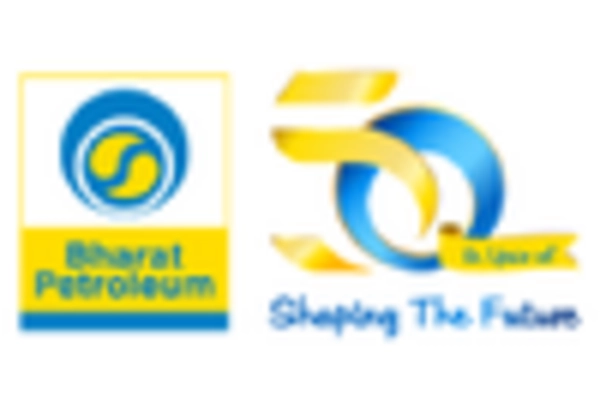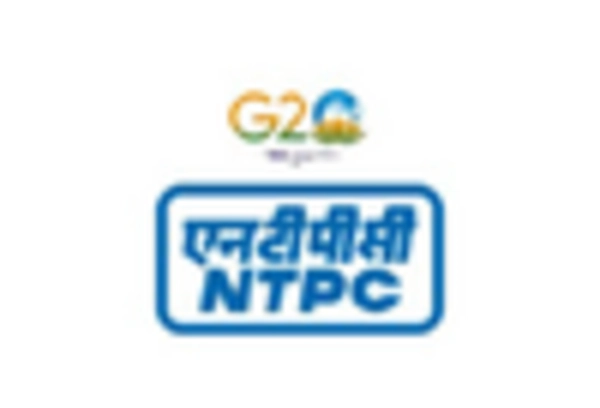Market Trends
Introduction
In 2023, the India Green Hydrogen Market is witnessing significant transformation driven by a confluence of macro factors including technological advancements, regulatory pressures, and evolving consumer behaviors. The push for sustainable energy solutions is prompting stakeholders to invest in innovative hydrogen production technologies, while government policies are increasingly favoring green hydrogen initiatives to meet climate goals. Additionally, a growing awareness among consumers regarding environmental sustainability is influencing demand for cleaner energy alternatives. These trends are strategically important for stakeholders as they navigate the complexities of a rapidly changing energy landscape, positioning themselves to capitalize on emerging opportunities and mitigate potential risks.
Top Trends
-
Government Policy Support
The Indian government has introduced the National Hydrogen Mission, aiming to promote green hydrogen production. This initiative is expected to attract significant investments, with a target of 5 million tonnes of green hydrogen production by 2030. Such policies are likely to enhance the operational landscape for companies, encouraging innovation and collaboration in the sector. The government's commitment to reducing carbon emissions further solidifies the market's potential. -
Technological Advancements
Innovations in electrolysis technology are driving efficiency in green hydrogen production. Companies are investing in advanced electrolyzers, which can reduce costs and increase output. For instance, Siemens has developed cutting-edge solutions that enhance energy efficiency. These advancements are expected to lower production costs, making green hydrogen more competitive against fossil fuels in the coming years. -
Corporate Investments and Partnerships
Major corporations are forming strategic partnerships to accelerate green hydrogen projects. For example, Reliance Industries has announced collaborations with global players to develop hydrogen infrastructure. Such partnerships are crucial for pooling resources and expertise, which can lead to faster project execution and market penetration. This trend indicates a shift towards collaborative models in the energy sector. -
Focus on Renewable Energy Integration
The integration of green hydrogen with renewable energy sources is becoming a priority. Companies like Adani Group are exploring synergies between solar power and hydrogen production. This integration can enhance energy security and reduce reliance on fossil fuels. As renewable energy capacity expands, the demand for green hydrogen is expected to rise, creating new market opportunities. -
Decarbonization Initiatives
Industries are increasingly adopting green hydrogen as part of their decarbonization strategies. For instance, NTPC Limited is exploring hydrogen blending in natural gas pipelines to reduce emissions. This trend reflects a broader commitment to sustainability, with companies aiming to meet regulatory requirements and consumer expectations. The shift towards cleaner energy sources is likely to reshape operational practices across sectors. -
Emerging Export Markets
India is positioning itself as a potential exporter of green hydrogen, targeting markets in Europe and Asia. The government is actively engaging in international collaborations to establish trade agreements. This trend could open new revenue streams for Indian companies and enhance their global competitiveness. As international demand for green hydrogen grows, India’s export capabilities may significantly impact the market landscape. -
Infrastructure Development
Investment in hydrogen infrastructure is critical for market growth. Companies are focusing on building refueling stations and storage facilities to support hydrogen mobility. For example, Bharat Petroleum is exploring hydrogen fueling stations for transportation. Enhanced infrastructure will facilitate the adoption of hydrogen technologies, making it more accessible for various applications in the future. -
Research and Development Initiatives
Increased R&D efforts are being directed towards improving hydrogen production and storage technologies. Academic institutions and private companies are collaborating on innovative projects. For instance, L&T is investing in R&D to enhance hydrogen production efficiency. These initiatives are expected to yield breakthroughs that could significantly lower costs and improve the viability of green hydrogen solutions. -
Public Awareness and Acceptance
Growing public awareness about climate change is driving interest in green hydrogen solutions. Educational campaigns and pilot projects are helping to inform consumers and businesses about the benefits of hydrogen. As acceptance increases, demand for hydrogen technologies is likely to rise, influencing market dynamics. This trend underscores the importance of stakeholder engagement in fostering a supportive environment for green hydrogen. -
Regulatory Frameworks and Standards
The establishment of regulatory frameworks and standards for green hydrogen is gaining momentum. The government is working on guidelines to ensure safety and quality in hydrogen production and usage. Clear regulations will provide a stable environment for investment and innovation, encouraging more players to enter the market. This trend is essential for building consumer confidence and ensuring the sustainable growth of the sector.
Conclusion: Navigating India's Green Hydrogen Landscape
The India Green Hydrogen Market is characterized by intense competitive dynamics and significant fragmentation, with both legacy players and emerging startups vying for market share. Regional trends indicate a growing emphasis on sustainability and local production capabilities, prompting vendors to adapt their strategies accordingly. Legacy companies are leveraging their established infrastructure and expertise, while emerging players are focusing on innovation and agility to capture niche segments. Key capabilities such as AI-driven optimization, automation in production processes, and a commitment to sustainability will be critical in determining market leadership. As the landscape evolves, decision-makers must prioritize flexibility and strategic partnerships to navigate the complexities of this burgeoning market.









Leave a Comment